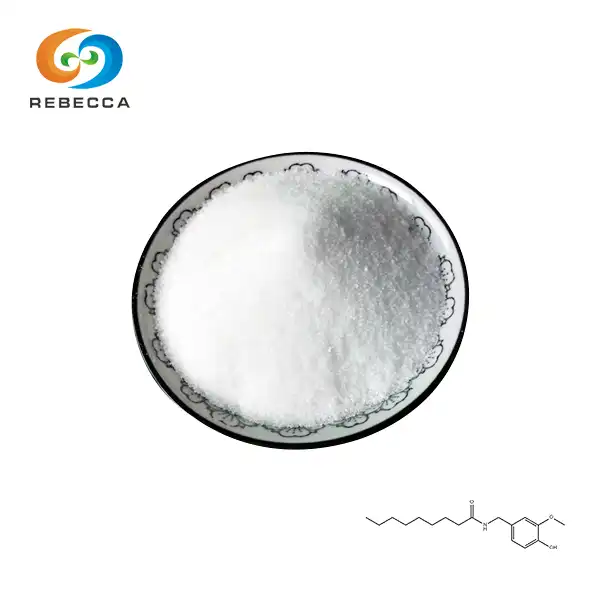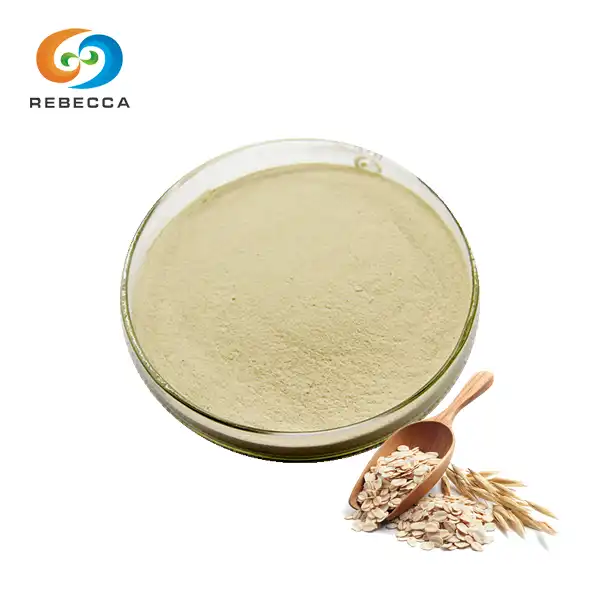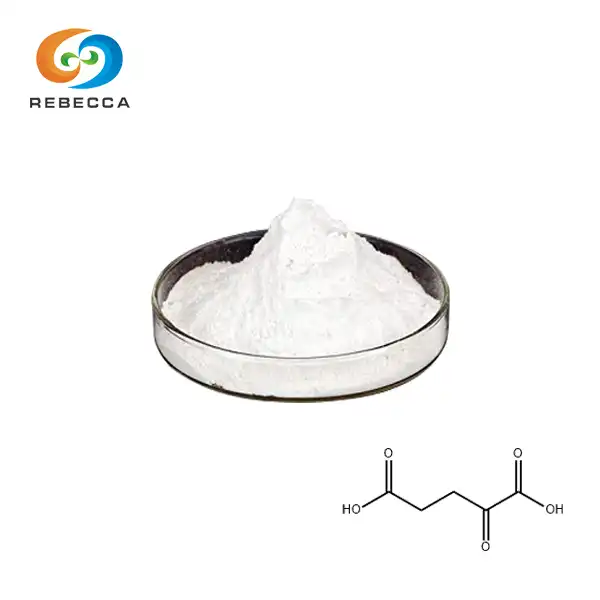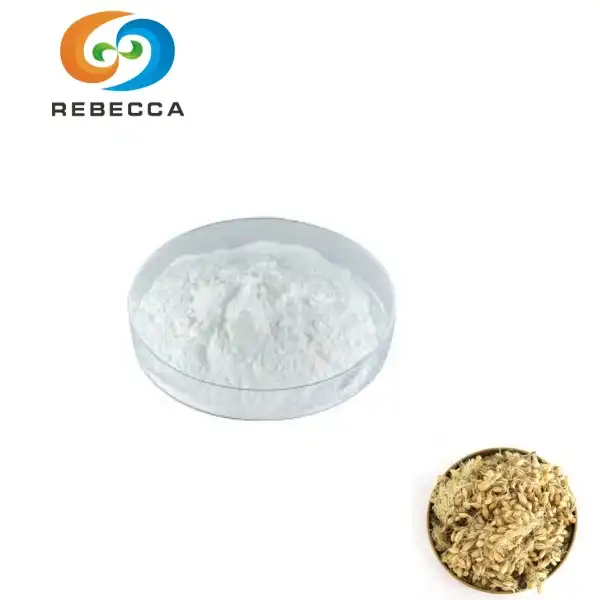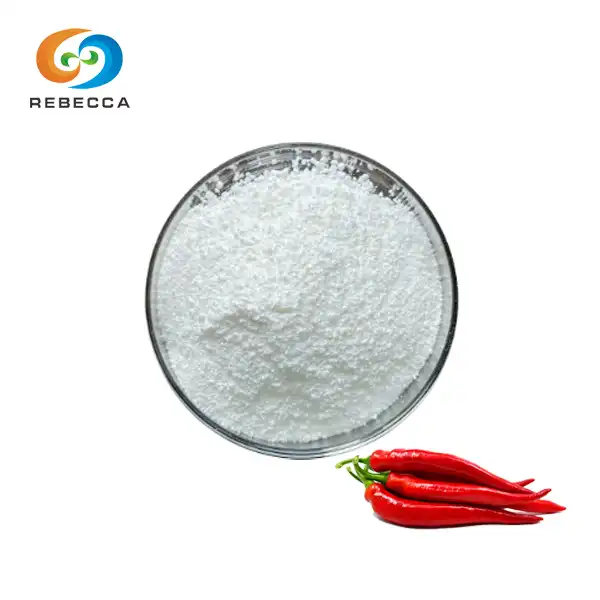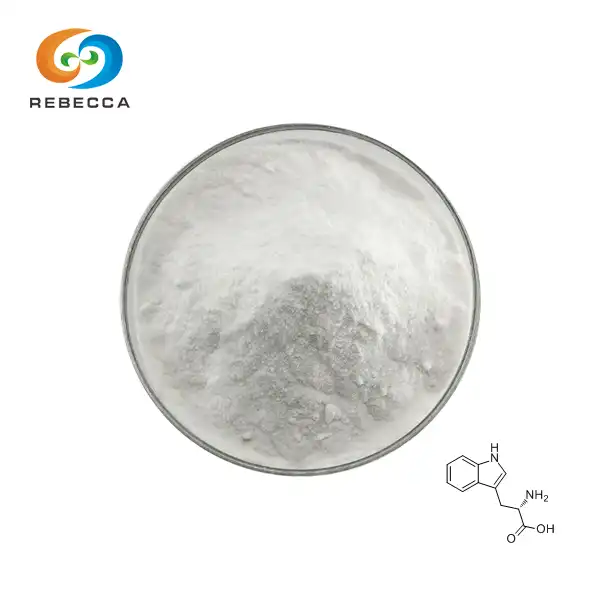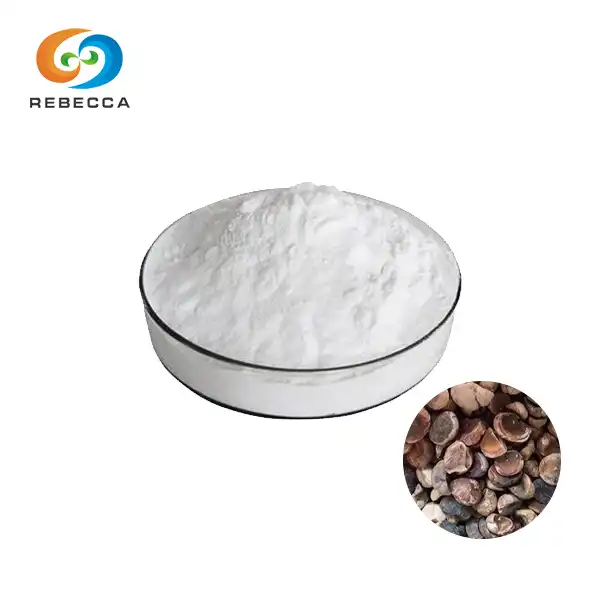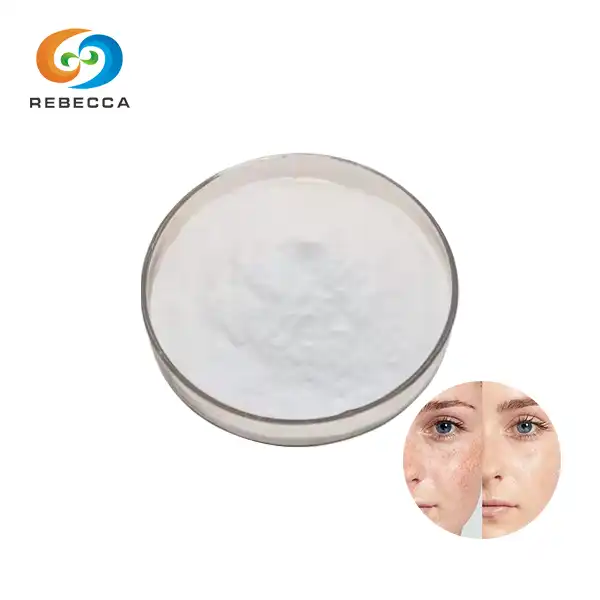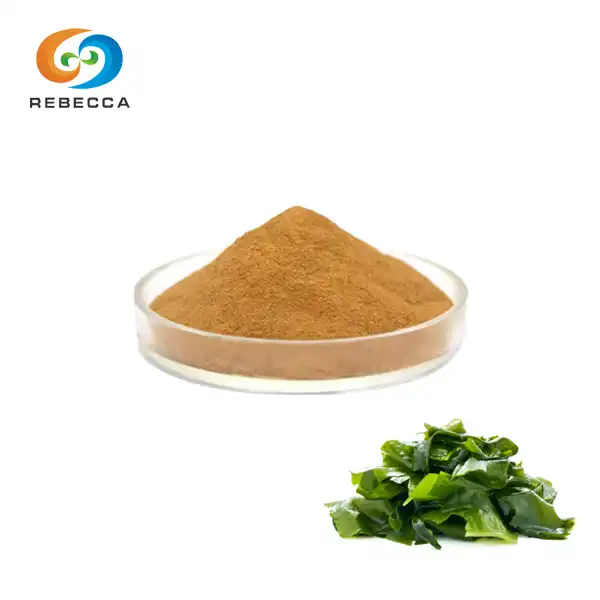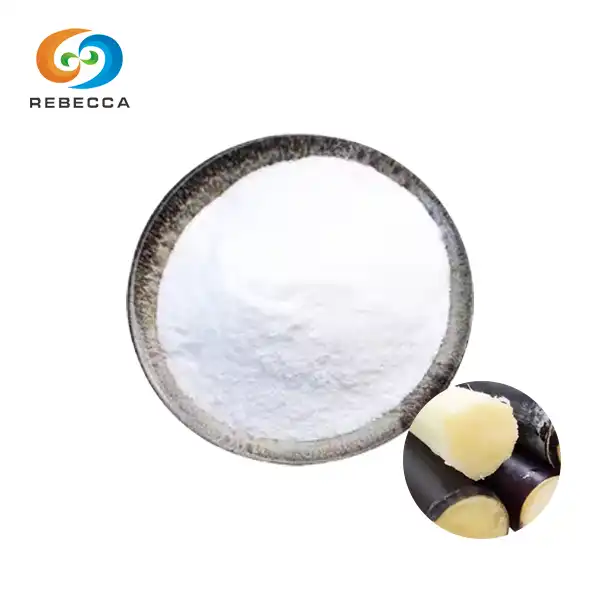Kaempferol Powder: Everything You Need to Know
Kaempferol powder has been garnering significant attention in the health and wellness community for its potent antioxidant properties and potential health benefits. This naturally occurring flavonoid, found in various fruits, vegetables, and herbs, is now available in a convenient powder form, making it easier than ever to incorporate into your daily routine. In this comprehensive guide, we'll explore the science behind kaempferol's health benefits, compare it to other flavonoids, and provide tips for purchasing high-quality kaempferol powder.

The Science Behind Kaempferol's Health Benefits
Kaempferol is a powerful flavonoid that has been the subject of numerous scientific studies due to its impressive range of potential health benefits. Research has shown that kaempferol may possess anti-inflammatory, antioxidant, and even anti-cancer properties.
One of the most notable aspects of kaempferol is its potent antioxidant activity. Antioxidants play a crucial role in neutralizing harmful free radicals in the body, which can contribute to oxidative stress and cellular damage. By reducing oxidative stress, kaempferol may help protect against various chronic diseases and support overall health.
Studies have also suggested that kaempferol may have anti-inflammatory effects, potentially helping to alleviate symptoms associated with inflammatory conditions. This anti-inflammatory action, combined with its antioxidant properties, makes kaempferol a promising compound for supporting cardiovascular health.
Perhaps one of the most exciting areas of kaempferol research is its potential anti-cancer properties. Several studies have indicated that kaempferol may inhibit the growth and spread of cancer cells, particularly in breast, ovarian, and lung cancers. While more research is needed to fully understand its mechanisms and efficacy, these preliminary findings are certainly promising.
Additionally, kaempferol has been linked to potential neuroprotective effects, which could have implications for cognitive health and neurodegenerative diseases. Some research suggests that kaempferol may help protect neurons from damage and improve memory and learning capabilities.

Kaempferol vs. Other Flavonoids
Kaempferol is just one of many flavonoids found in nature, each with its own unique properties and potential health benefits. To better understand kaempferol's place in the world of flavonoids, let's compare it to some other well-known compounds in this category.
Quercetin is perhaps one of the most widely studied flavonoids and shares many similarities with kaempferol. Both compounds have strong antioxidant properties and have been linked to potential cardiovascular and anti-cancer benefits. However, some studies suggest that kaempferol may have superior anti-inflammatory effects compared to quercetin.
Another prominent flavonoid is luteolin, which, like kaempferol, has shown promise in cancer prevention and treatment. While both compounds exhibit anti-cancer properties, they may work through slightly different mechanisms. Some research indicates that kaempferol may be particularly effective against hormone-dependent cancers, such as breast and ovarian cancer.
Myricetin is another flavonoid that's often compared to kaempferol. Both compounds have demonstrated antioxidant and anti-inflammatory properties, but myricetin has shown particularly strong potential in diabetes management. Kaempferol, on the other hand, may have more pronounced effects on cardiovascular health.
Apigenin is a flavonoid found in many fruits and vegetables, similar to kaempferol. Both compounds have shown promise in cancer prevention, but apigenin has been more extensively studied for its potential anxiolytic (anti-anxiety) effects.
While each of these flavonoids has its own unique profile of potential health benefits, kaempferol stands out for its broad spectrum of activities. It appears to have a balanced profile, offering potential benefits for cardiovascular health, cancer prevention, neuroprotection, and more. This versatility makes kaempferol powder an attractive option for those looking to support overall health and wellness.

Tips for Buying Quality Kaempferol Powder
As the popularity of kaempferol powder grows, it's crucial to know how to select a high-quality product. Here are some essential tips to keep in mind when purchasing kaempferol powder:
- Purity: Look for products that specify the purity level of kaempferol. Higher purity levels generally indicate a more potent and effective product. Some manufacturers offer kaempferol powders with purity levels of 98% or higher.
- Source: Check where the kaempferol is sourced from. Reputable manufacturers will often disclose the plant sources of their kaempferol, such as Sophora japonica (Japanese pagoda tree) or Ginkgo biloba leaves.
- Third-Party Testing: Choose products that have undergone third-party testing for quality and purity. This ensures that the product contains what it claims and is free from harmful contaminants.
- Extraction Method: The method used to extract kaempferol can affect its quality and potency. Look for products that use clean, efficient extraction methods such as supercritical CO2 extraction.
- Packaging: Kaempferol, like many antioxidants, can be sensitive to light and air. Choose products that come in opaque, airtight containers to preserve the powder's potency.
- Certifications: Look for certifications such as GMP (Good Manufacturing Practices) or organic certifications, which indicate adherence to quality standards.
- Customer Reviews: While not always reliable, customer reviews can provide insights into the product's quality and effectiveness. Look for products with consistently positive reviews from verified purchasers.
- Price: While it's tempting to opt for the cheapest option, extremely low prices may indicate lower quality or purity. Compare prices across reputable brands to get an idea of the reasonable price range for high-quality kaempferol powder.
- Dosage Information: Reputable manufacturers will provide clear dosage instructions. Be wary of products that don't offer this information or make exaggerated claims about dosage or effects.
- Company Reputation: Research the manufacturer's reputation. Look for companies with a history of producing high-quality supplements and a commitment to transparency in their manufacturing processes.

Conclusion
Kaempferol powder represents an exciting development in the world of natural health supplements. With its potent antioxidant properties and potential benefits for cardiovascular health, cancer prevention, and neuroprotection, it's no wonder that this flavonoid is gaining attention. By understanding the science behind kaempferol, how it compares to other flavonoids, and how to select a high-quality product, you can make informed decisions about incorporating kaempferol powder into your wellness routine.
As research continues to uncover the full potential of kaempferol, we can expect to see even more applications for this powerful compound. Whether you're looking to support your overall health or target specific wellness goals, kaempferol powder may be a valuable addition to your supplement regimen. For more information about kaempferol powder and other natural herbal extracts, please contact us at information@sxrebecca.com. Our team of experts is always ready to answer your questions and help you find the right products for your needs.
References
1. Chen, A. Y., & Chen, Y. C. (2013). A review of the dietary flavonoid, kaempferol on human health and cancer chemoprevention. Food Chemistry, 138(4), 2099-2107.
2. Calderon-Montano, J. M., Burgos-Morón, E., Pérez-Guerrero, C., & López-Lázaro, M. (2011). A review on the dietary flavonoid kaempferol. Mini Reviews in Medicinal Chemistry, 11(4), 298-344.
3. Devi, K. P., Malar, D. S., Nabavi, S. F., Sureda, A., Xiao, J., Nabavi, S. M., & Daglia, M. (2015). Kaempferol and inflammation: From chemistry to medicine. Pharmacological Research, 99, 1-10.
4. Imran, M., Salehi, B., Sharifi-Rad, J., Aslam Gondal, T., Saeed, F., Imran, A., ... & Estevinho, L. M. (2019). Kaempferol: A key emphasis to its anticancer potential. Molecules, 24(12), 2277.
5. Rajendran, P., Rengarajan, T., Nandakumar, N., Palaniswami, R., Nishigaki, Y., & Nishigaki, I. (2014). Kaempferol, a potential cytostatic and cure for inflammatory disorders. European Journal of Medicinal Chemistry, 86, 103-112.
_1730691017423.webp)

